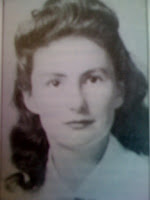No discussion of the Lyric Players Theatre would be complete without mentioning Mary O’Malley, founder of the theatre and self-taught director of hundreds of plays. Mary was a devotee of W.B. Yeats, and modelled the Lyric on Dublin’s Abbey Theatre. She guided the Lyric through the early years of productions staged in her own home right through to its move to a purpose-built theatre on the banks of the River Lagan, on Ridgeway Street in Belfast.
Born in 1918 in Mallow, county Cork, the then Mary Hickey developed an early love of theatre after seeing a production of Dion Boucicault’s The Colleen Bawn at the age of six. Her brother Gerald, himself a successful set designer, brought her to the Abbey when she was thirteen, pointing out to her the famous playwrights Yeats and Lady Gregory. She remained fascinated with Yeats’ plays, staging all of them throughout the Lyric’s early years.
 |
| Image via www.archiseek.com |
After completing her education at Loreto Convent, Mary moved to Dublin with her mother. She immersed herself in Dublin’s theatrical scene, becoming a member of the New Theatre Group and the Irish Film Society, amongst others. These were exciting times in Dublin: the Second World War had driven many intellectuals and artists to Dublin from the continent, making for a vibrant cultural atmosphere in the city. It was at this time also that Mary’s political conscience began to assert itself, which will be explored in a future post.
 |
| Dr Pearse O'Malley |
Mary met her future husband Pearse O’Malley, a neurologist, in Dublin and they married in September 1947. The marriage meant a move north, as Pearse was involved in the planning of a new Department of Neurology and Psychiatry in the Mater Hospital, Belfast. Northern Ireland’s capital was found lacking, culturally speaking, when compared to the O’Malleys’ experiences in Dublin. Mary however soon created an outlet for herself; the beginnings of the Lyric Players Theatre will be detailed in a forthcoming post.















